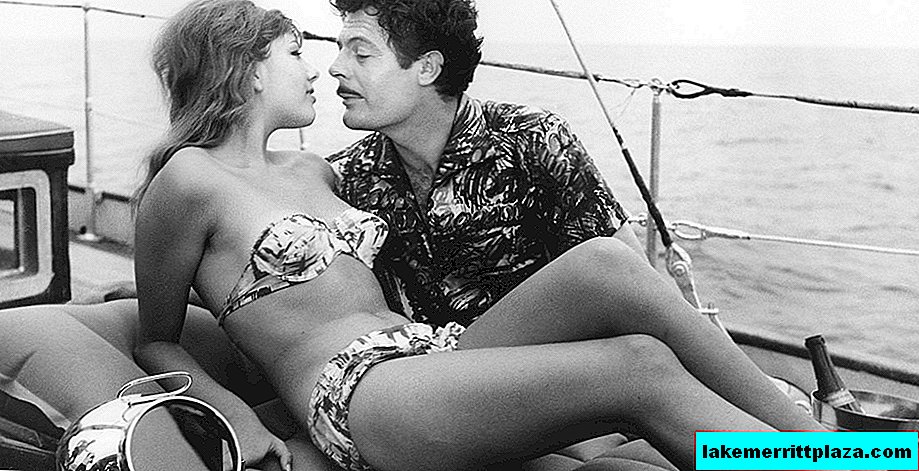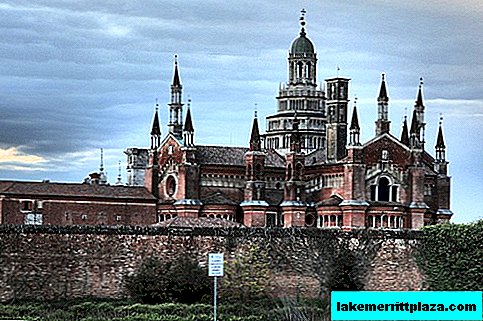Papal basilicas have the highest rank in the hierarchy of the Roman Catholic Church. The papal basilicas received their status from the Pope himself, thus finding himself under the direct jurisdiction of the Holy See. There are 12 of them, in Rome there are 4 of them. In this article we will tell you some details about the basilicas themselves, as well as their address, opening hours and how to get to each of them.
The first papal basilicas were named in 1300, when Pope Boniface VIII set forth the concept of the Great Basilica in the papal bull. Pilgrimage to such basilicas allowed believers to receive indulgence.
To do this, after confession and communion, sinners had to go through the Holy Doors, which opened only once a century in the Holy Year.
Initially, this rite was performed only in the Basilica of St. Peter in the Vatican and in the Basilica of St. Paul outside the city walls.

Holy doors opened once a century - in the Holy Year
In 1350, the Basilica of San Giovanni in Laterano received from Pope Clement VI the title "mother and head of all the churches of the city and the world" and was also ranked as the Great Basilica. In 1390, the basilica of Santa Maria Maggiore joined the ranks of papal basilicas.
St. Peter's Basilica in Vatican
The impressive size of the basilica allows us to consider it the largest Christian cathedral in the world. It is here that all the most important events of the Catholic Church take place: the proclamation of new pontiffs, the canonization of saints and other rites.

St. Petra - the largest Christian cathedral in the world
The territory of the basilica the size of three football fields can simultaneously accommodate up to 60,000 believers, another 400,000 people can be accommodated in the square in front of the Cathedral.
Marks on the floor of the hall, outlining the boundaries of other major temples, help to evaluate the scale of the building. In addition, it is the tallest building in Rome: buildings higher than the 130-meter high dome of the basilica are not allowed here.
There is a legend according to which the basilica is located at the burial place of St. Peter.

This is where all the most important events of the Catholic Church take place.
Initially, it housed the church erected by Constantine I, and in 1506-1626 it was replaced by the majestic basilica building, to the masterpieces of which Donato Bramante, Rafael Santi, Gian Lorenzo Bernini and Michelangelo Buonarotti had a hand.
- Address: Piazza San Pietro, 00120 Città del Vaticano, Vatican
- Opening hours: April-September from 09:00 to 19:00, October-March from 09:00 to 18:00
- Getting there: by metro - station Ottaviano, Cipro (line A), by tram - stop Risorgimento - San Pietro (No. 19), by bus - stop Risorgimento (No. 590), Viale Vaticano-Musei Vaticani (No. 49).
Basilica of São Paulo Fuori Le Mura
St. Paul's Basilica outside the city walls - this is how the name of this basilica is translated.
The church at the site of the alleged burial of the Apostle Paul, decapitated by Emperor Nero, was erected at the beginning of the 4th century under Constantine I and consecrated by Pope Sylvester in 324. Towards the end of the 4th century, the church building was rebuilt and re-consecrated in 390.

The basilica of São Paulo Fuori le Mura contains the relics of the Apostle Paul
In the XIX century, the temple was almost completely destroyed by fire, only the mosaic of the V century decorating the triumphal arch, and some decor elements were preserved. After the fire, the cathedral was rebuilt almost anew in the classical style. In this form, it has survived to the present day.
Above the marble colonnade, which runs along the side walls, there is a gallery with portraits of all the popes. The altar of the Basilica of St. Paul is lined with semiprecious stones, which were donated by Emperor Nicholas I.

A gallery with portraits of all the popes is arranged above the marble colonnade
The relics of the apostle Paul and the links of the chain into which the apostle was chained before execution are stored here.
- Address: Piazzale San Paolo, 1
- Opening hours: from 7:00 to 18:30
- How to get there: by metro - Marconi or Garbatella station (line B), by tram - stop Basilica San Paolo (No. 2), by bus - stop Via Ostiense - San Paolo (No. 23, 769).
Basilica of San Giovanni in Laterano
Only the pope can serve behind the altar of this basilica - therefore, it was given the status of archibasilica, that is, the main among the Catholic churches. The Holy See located here, represented in the form of the Papal Throne, symbolizes the strength and responsibility of the Bishop of Rome.

Only the Pope can serve behind the altar of this basilica
The first basilica building was erected in the 4th century on the territory of the estate of the Lateran family, but by the 16th century the building was completely dilapidated, having survived several reconstructions and two fires. Therefore, the building was decided to demolish, and in its place to build a new cathedral.
The construction of the current temple continued until the 18th century. Today, statues of the twelve apostles, reliefs with episodes of the Old and New Testaments, floor mosaics of the 14th century, frescoes by Giotto and frescoes in the form of tapestries in the mannerism style are stored here.

The first basilica building was erected on this site in the 4th century.
One of the main relics of the cathedral is the remains of the Countertop, behind which Jesus and his disciples gathered for the Last Supper.
- Address: Piazza di San Giovanni in Laterano, 4
- Opening hours: from 07:00 to 18:30
- How to get there: by metro stop San Giovanni (Line A), by bus - stop San Giovanni (No. 116).
Basilica of Santa Maria Maggiore
According to legend, the place for the construction of this church to Pope Liberia was indicated by the Virgin Mary herself, who appeared to him in a dream. She indicated that the church should be built where snow falls in the morning. And the snow really fell - on August 5, 356 on the Esquiline Hill of Rome.
Over the centuries, the temple was repeatedly rebuilt and rebuilt, so today it has bizarrely mixed several architectural styles.

According to legend, the place for the church of Pope Liberia was indicated by the Virgin Mary herself
The interior of the cathedral is richly decorated with early Christian mosaics, colorful paintings on the ceiling and marble slabs. Some interior details in decorating the basilica were made of gold, donated by the first Spanish conquerors of Latin America.
The basilica of Santa Maria Maggiore contains fragments of the Nursery of Christ brought to Rome by St. Helena, the mother of Emperor Constantine, and in the chapel of Sistine lies the remains of the great sculptor Bernini.

The temple is richly decorated with early Christian mosaics.
BlogoItaliano spoke in more detail about the Basilica of Santa Maria Maggiore in a separate article.
- Address: Piazza di S. Maria Maggiore, 42
- Opening hours: from 7:00 to 19:00
- Getting there: By metro - stop Termini (line A, B)
Photos by: blogoitaliano.com, Randy OHC, Gregorio Borgia.








